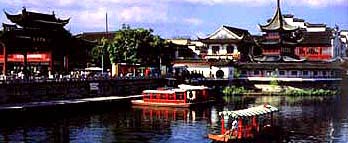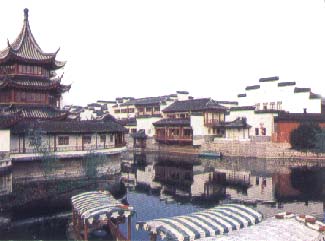| Travel in China > Natural Scenery > Rivers |
|
|
Qinhuai River
Floating lights are the most famous view on the Qinhuai River. On the river, any boat or ship, large or small, will hang color lamps. It is a very important activity for a visitor to ride such a boat, floating on the river to enjoy the scenes. The prestigious Chinese writer Zhu Ziqing (1898-1948) wrote a verse on the floating lights, which gave a very good description of the wonderful view.
The Confucian Temple is now the center of Qinhuai scenery belt with the Qinhuai River winding through. Other spots are the Zhanyuan Park, Confucian ancient buildings, the Aigrette Island, the Fort at Zhonghua Gate, boats on the river and many views along the banks. The tour is really attractive with so many historical relics, parks, and local features. |
||||||
All rights reserved. Reproduction of text for non-commercial purposes is permitted provided that both the source and author are acknowledged and a notifying email is sent to us. |
||||||
 |

